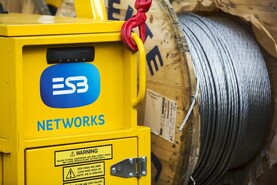Electricity and water in Ireland have had very different histories, but have insecurity in common. Ireland’s electricity system is faltering – generation adequacy is falling behind demand and the national grid needs strengthening.
There are concerns about the reliance of gas generation on dwindling domestic output from the Corrib field and on a single-import interconnector from Scotland.
There are also serious deficiencies in water availability and worries about water quality in many areas.
Eirgrid, the State company which plans and operates the grid, has been unable to build the transmission infrastructure it deems necessary, while Irish Water struggles with a capacity backlog, especially acute in the Dublin area, where it may have to restrict new connections.
These two arms of the State are constantly in contention with the planning system, where the power of objectors to new capital developments has been a factor in delaying their plans.
The electricity companies, Eirgrid and Electric Ireland, have a cost-recovery pricing model, which ensures that they can fund their operating costs, remunerate capital borrowings and afford to pay dividends to the Exchequer. The customer grumbles but pays the full cost and neither company is reliant on the discretionary allocation of budget funds. Irish Water is not so lucky. It has never enjoyed a cost-recovery pricing structure, incurs large operating losses funded by State subvention and has no standalone capacity to fund its balance sheet. Many of its operating personnel continue in the employment of local authorities.
The ESB was established in 1927 and quickly took over the pre-existing generation and distribution companies, some privately owned, but many run by local authorities.
The company (now two distinct State companies, with transmission operations transferred to Eirgrid) went on to build the Shannon hydroelectric scheme and the fossil-fuelled power plants around the country, to complete rural electrification in the 1960s and the national high-voltage grid, funding its operations and capital programme independently of the Exchequer.
All of its regular staff are direct employees. Whatever shortcomings have arisen over the years are laid squarely on the shoulders of the State-owned entity responsible.
Water supply and waste water disposal remained a local authority function until 2013.
Water is a substantial national utility, with €6.4bn in assets, including 90,000km of network, over 700 water plants and over 1,000 wastewater treatment facilities.
But the ESB model, where users pay whatever it costs to run the system and to support balance sheet expansion, established in the early years of the new State, was not followed.
Of the 4,200 employed in the water industry, 3,000 remain as direct employees of the local authorities from which the assets have been separated.
Their continuing role as 31 sub-contractors to Irish Water has arisen through failure to resolve an industrial relations dispute about the transfer of staff from one form of State employment to another.
This inhibits the centralisation of management and procurement, which had been a principal objective of the reorganisation of the electricity industry in 1927.
The water industry’s annual revenue reached €1,309m in 2022 with €961m, or almost three-quarters, coming via an annual subvention from central Government.
Data centres are also heavy consumers of water
The remaining one quarter is all that can be covered with customer revenue, consisting only of connection charges and payments from commercial customers.
Without a secure financial base, the company cannot sell long-term debt, as can the ESB, so its annual capital spend is effectively funded directly by central Government, in addition to the huge annual subvention.
The reason for this unintended outcome is that Enda Kenny’s Government capitulated to a populist campaign against charges for water use in households, contrary to the stated positions of all main political parties, after a 2014 by-election in Dublin south-west won by an independent candidate who chose to major on the issue. Ireland is the only European country in which water is free, and even the Green Party has backed off charging for water.
The pressure on electricity supply is greatest in the Dublin area where connections to power-hungry data centres are being restricted.
Data centres are also heavy consumers of water and once again the greatest pressure on future supplies is in the Dublin area.
Irish Water would like to spend an estimated €1.65bn on a project to pipe around 2% of the Shannon’s flow to Dublin, which they claim would make no difference to water availability elsewhere.
A slowdown in data centre development would help on both counts, although data centre demand is not central to the emerging Dublin water shortage. More housing in the capital needs more water, even if there were no more data centres.
If it was a good idea to take responsibility for electricity away from local authorities and charge the customer 100 years ago, it is time to do the same for water.






 This is a subscriber-only article
This is a subscriber-only article










SHARING OPTIONS: